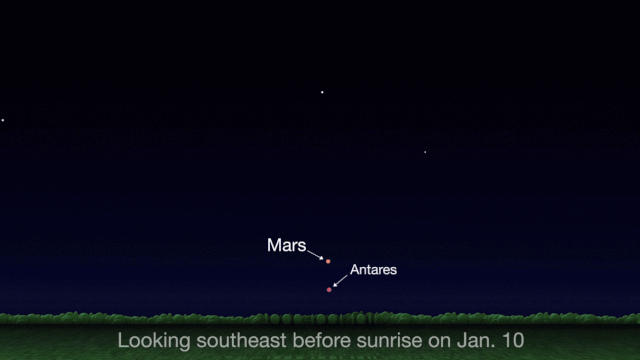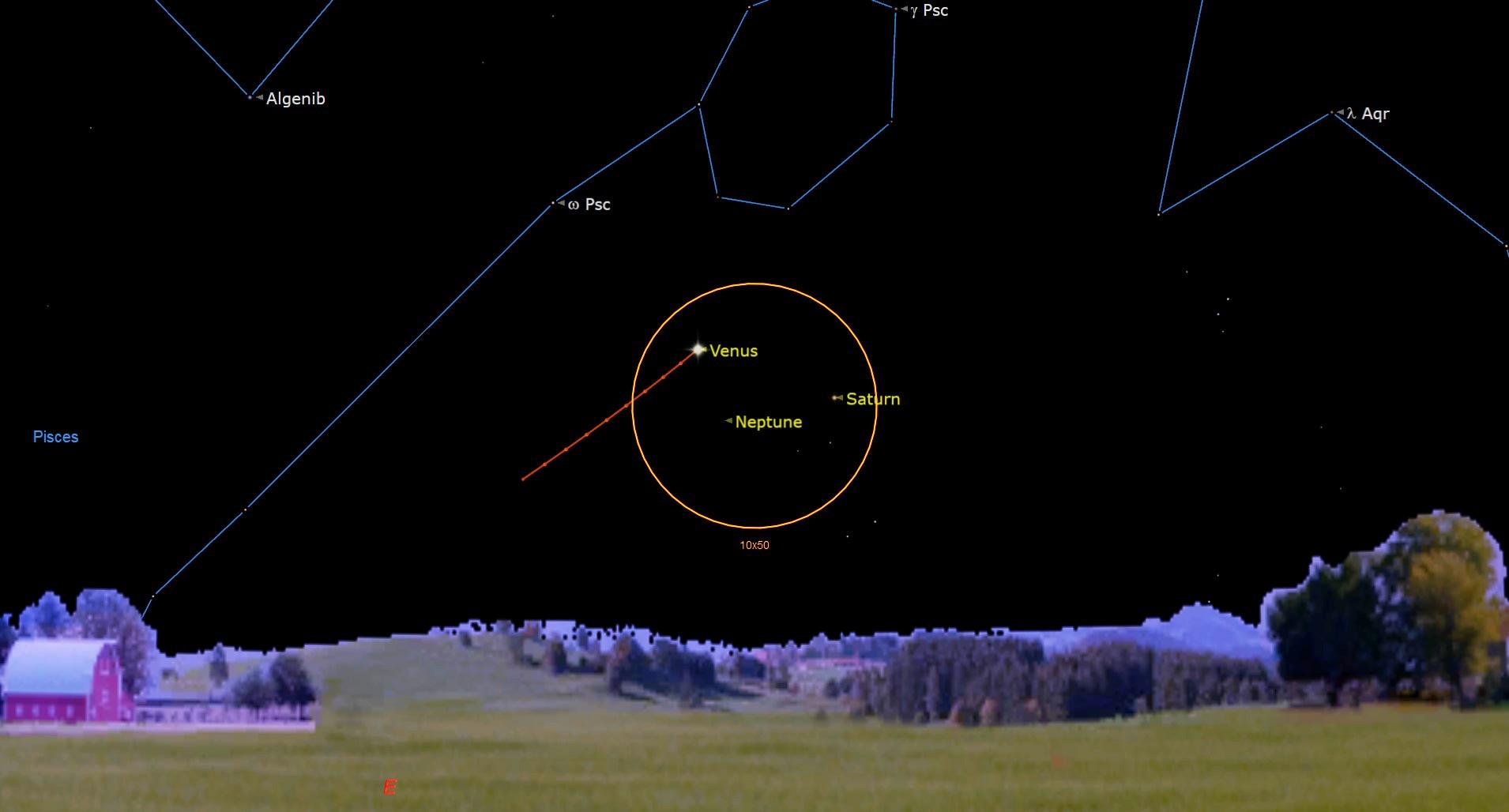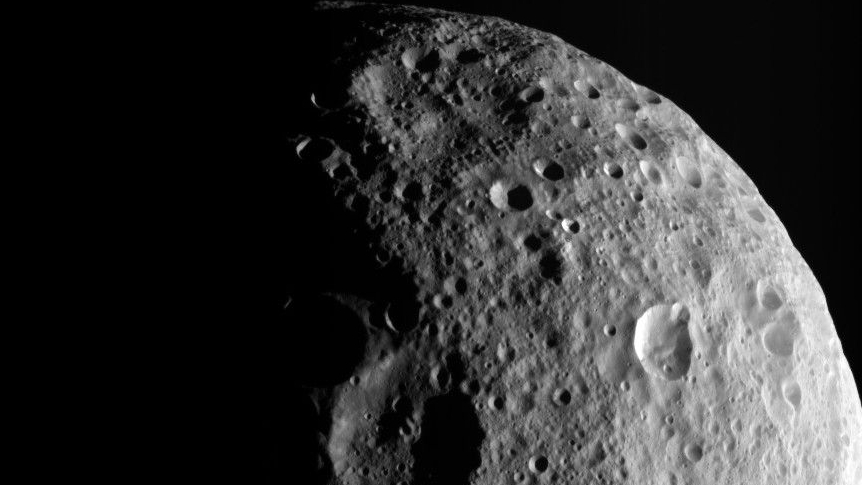See the moon, Mars and Antares form a triangle in Monday's predawn sky

The waning crescent moon will form a triangle with the Red Planet and the bright star Antares in the morning sky on Monday (Jan. 20), and you can catch the trio in the morning sky before dawn.
Mars will be in conjunction with the moon — meaning they share the same celestial longitude — at 2:12 p.m. EST (1912 GMT), but they will be invisible in daylight for skywatchers across the U.S. at that time. However, the pair will be observable for a few hours before sunrise.
In New York City, for example, Mars rises at 3:56 a.m. local time, and the moon rises about half an hour earlier. Antares will be the last of the three to rise, at 4:07 a.m. local time in New York. The sun will rise there at 7:15 a.m. local time, which means skywatchers have about three hours to see the celestial trio before they fade into the sunlight.
Related: Best night sky events of January 2020 (stargazing maps)

During their encounter on Monday morning, the moon and Antares will be in the constellation of Scorpius, the scorpion, while Mars will be in the neighboring constellation of Ophiuchus, the snake bearer.
Shining only at first magnitude, Mars will be relatively dim compared with Antares, which is the fifteenth-brightest star in the night sky. The Red Planet will be at its brightest on Oct. 13, when it reaches opposition, or the point in the sky directly opposite the sun.
- When, where and how to see the planets in the 2020 night sky
- Night sky, January 2020: What you can see this month [maps]
- Astronomers map atmosphere of dying supergiant Antares
Email Hanneke Weitering at hweitering@space.com or follow her @hannekescience. Follow us on Twitter @Spacedotcom and on Facebook.
Get the Space.com Newsletter
Breaking space news, the latest updates on rocket launches, skywatching events and more!

Join our Space Forums to keep talking space on the latest missions, night sky and more! And if you have a news tip, correction or comment, let us know at: community@space.com.

Hanneke Weitering is a multimedia journalist in the Pacific Northwest reporting on the future of aviation at FutureFlight.aero and Aviation International News and was previously the Editor for Spaceflight and Astronomy news here at Space.com. As an editor with over 10 years of experience in science journalism she has previously written for Scholastic Classroom Magazines, MedPage Today and The Joint Institute for Computational Sciences at Oak Ridge National Laboratory. After studying physics at the University of Tennessee in her hometown of Knoxville, she earned her graduate degree in Science, Health and Environmental Reporting (SHERP) from New York University. Hanneke joined the Space.com team in 2016 as a staff writer and producer, covering topics including spaceflight and astronomy. She currently lives in Seattle, home of the Space Needle, with her cat and two snakes. In her spare time, Hanneke enjoys exploring the Rocky Mountains, basking in nature and looking for dark skies to gaze at the cosmos.
-
rod ReplyAdmin said:The waning crescent moon will form a triangle with the Red Planet and the bright star Antares in the morning sky on Monday (Jan. 20), and you can catch the trio in the morning sky before dawn.
See the moon, Mars and Antares form a triangle in Monday's predawn sky : Read more
Very lovely view. I observed 0600 EST, quite a sight where I am at, clear, cold skies too.









